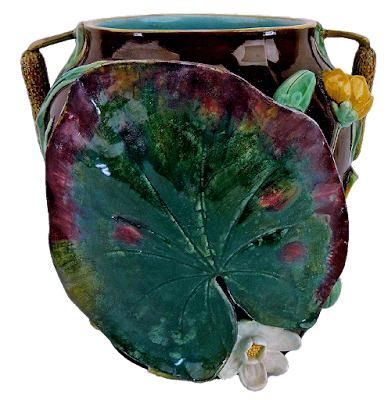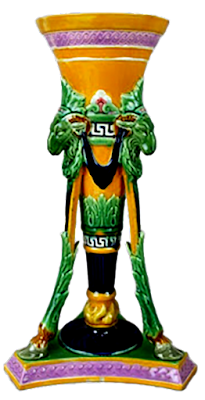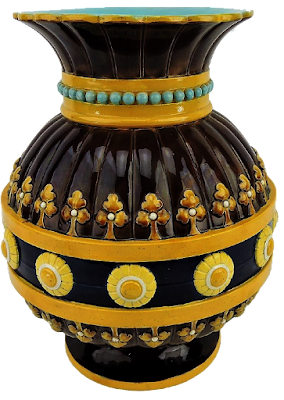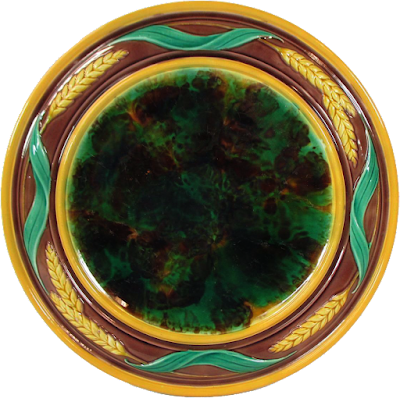Not as well known as Minton, George Jones and Wedgwood, the company of T.C, Brown-Westhead Moore & Company made some exceptional pottery, among their output beautiful majolica. The name is no longer active in the conversation but their Victorian legacy is rich.
The firm of T. C. Brown-Westhead & Moore was founded in 1861 at the Cauldon Place Pottery. Thomas Chappell Brown-Westhead joined with William Moore to take over the firm of Ridgway, Bates & Co. on the retirement of John Ridgeway and Mr. Bates. At Mr. Moore’s death in 1866 his brother James took over his role in the firm. He was later incorporated as partner in 1875. In 1872 the company purchased the Victoria Pottery which is where the company potted its largest majolica wares.
The company was a large one. Fifteen hundred employees worked the eight acre pottery of fourteen kilns and twenty ovens. Joseph Brown was installed as head designer and James Moore as head modeler. The company had a prodigious output mainly in earthenware, majolica and transfer ware; sanitary wares and porcelain. As the company partners died the pottery was handed down to their children. The company operated until 1920 when it became the Cauldon Pottery.
The majolica of Brown-Westhead Moore is among the finest to come out of Victorian England and a good percentage is marked. Majolica usually has an impressed mark while other wares had ink stamps.
You can’t really say they had a perceptible style like George Jones or Wedgwood but their work was marvelously crafted.
They made beautiful figural pieces like dogs...
"The chefs d'oeuvre in the majolica section consist of a pair of candelabra and a double group of tigers… The tigers are life-size, and naturally colored, in groups of two each, the foliage of the jungle being introduced with good effect. Each group is five feet four inches long by three feet ten inches wide at the base, and as they will be placed in the centre of a stand specially devoted to them, the spectator will view a group of three tigers, from whichever point he looks at them."
















































































































